
The View: Humbling and Uplifting at #NYSGB2019
I am a hiker. It feels bold to say that, but there you go. My son and I are “aspiring 46-ers” working toward hiking all the 46 high peaks in the Adirondacks. We have hiked 36 of them, and hope to complete the list this year….and then I hope to hike a few of them again next year, and in the years after. If you want to see how amazing this journey is, I highly recommend watching the 46-ers film.
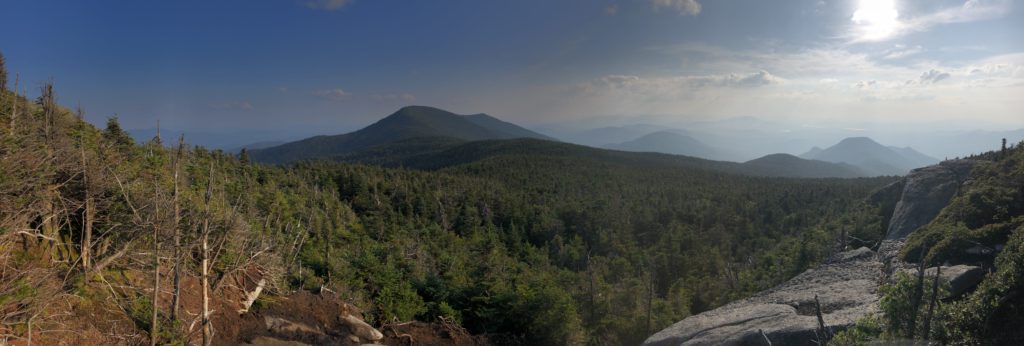
Hiking in the Adirondacks means a journey full of quiet and noise, exhaustion and exhilaration, peace and frustration, closed-off views of just your feet and broad expanses of vistas beyond your comprehension. And my son and I have quickly come to realize that the hard-won view from an open peak is simultaneously inspiring and shockingly terrifying. Relief from the achievement, and a smack in the face that you now have to hike out. “I can’t believe we have come so far” vies with “Wow, look how far we have to go.”
Thus was my experience at the NYC GBC 2019.
I have been working for green building awareness, technical competencies, innovation, changes in process, respect for life-long learning, resiliency, collaboration, and more for my entire career. We have come so far and some days I cannot believe the progress we have made in so short a time. Yet the view from where we stand now shows us just how far we still have to go. As we learn, we continually build our own capacity to learn more. We have rounded a corner and the view of the path ahead lies exposed, exhilarating and daunting.
As we learn, we continually build our own capacity to learn more.
NYS GBC 2019 revelation
The 17th NYS Green Building Conference was held last week in Syracuse, NY. What follows is a recap of the sessions I was able to attend, about 20% of the content. I welcome any other attendees to share info on the sessions they attended, the big ideas that struck them, the lessons learned, or wow moments, in added comments, or by sending them to me.
The overall message was made exceptionally clear by the first keynote, delivered by Jasper van den Munckhof, Director/Founder of Energiesprong. This is a Dutch originated program that seeks to retrofit existing homes to zero net energy performance in just one day, and at a price point that means full payoff from the energy savings over the life of the loan for the work. The concept seeks innovation, cost compression over an aggregate field of projects, and tremendous scaling to change the building market. There are projects in NYS, aligning state agencies such as NYSERDA through RetrofitNY, DASNY design and construction oversight, and SUNY through its residence halls. Projects are ongoing in NY affordable housing and student housing. It is exciting, scary, challenging, frustrating, and absolutely needed work.
I was particularly moved by the comparison of the first MEP solution for a single-family home (in the Netherlands) as compared to the more current solution. The progress has included cost compression, speed of manufacture in a modular approach, speed of installation, increased simplicity, and access to all systems from the outside of the building to decrease disturbance to the residents. Wow.
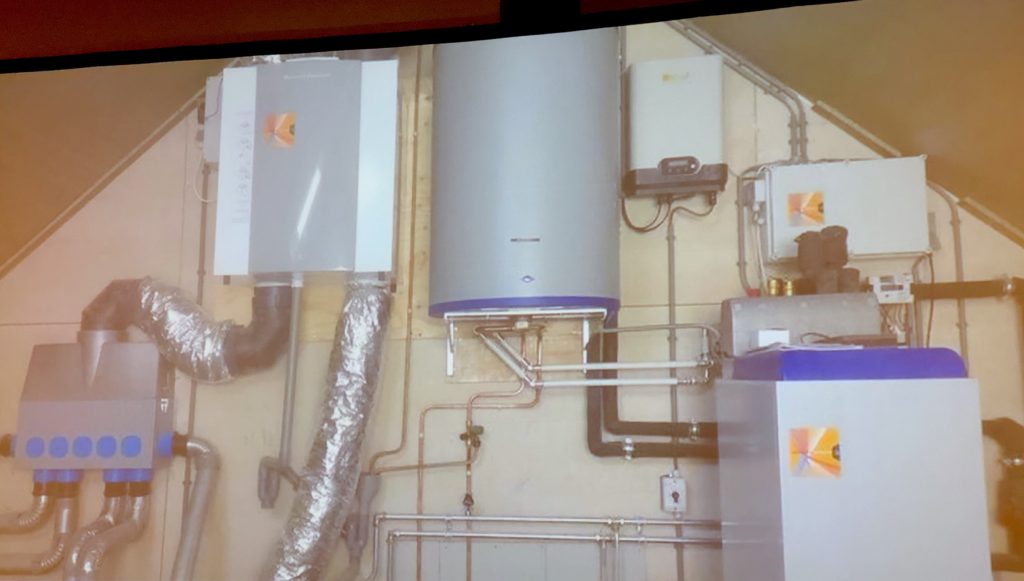
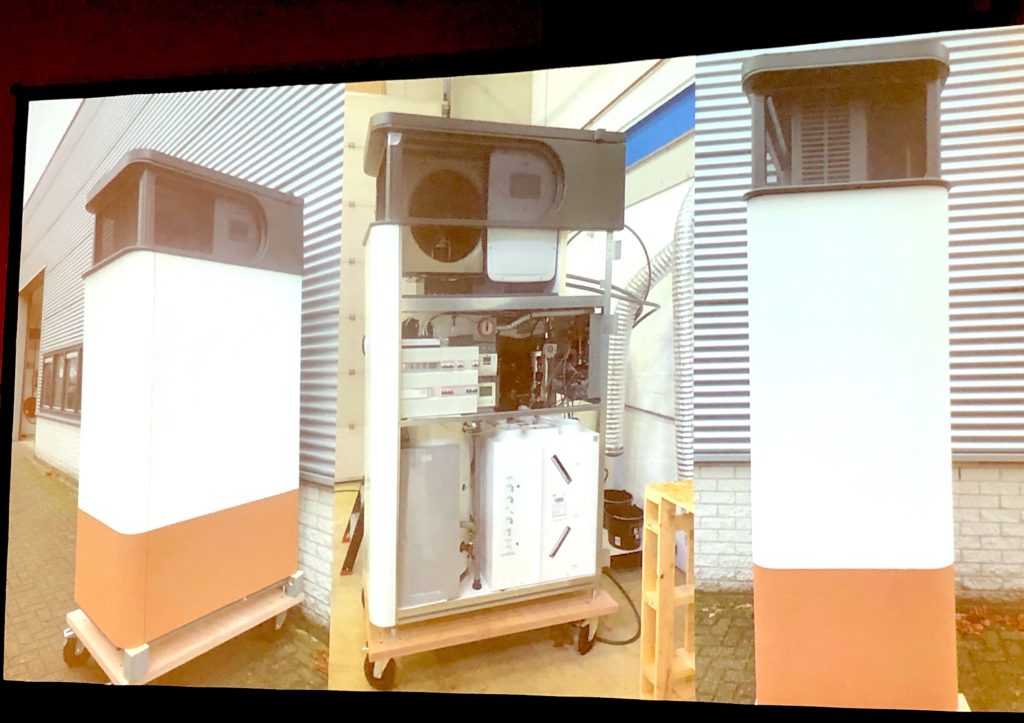
This same message about the need for innovation and the goal of cost reduction over time was repeated and strengthened when Janet Joseph of NYSERDA spoke at lunch about the energy goals of NY. These goals include expectation of zero net energy as being base energy code compliance in 2030 or so. They include 100% carbon-free energy by 2040, and investment in energy use reductions to reduce our use in this one state by over 185 TBtu by 2025. That’s a significant amount of effort yielding incredible value for New York, including the typically uncounted benefits to our health by reduction in fossil fuel use, and benefits to our wallets from potentially reduced health care spending.
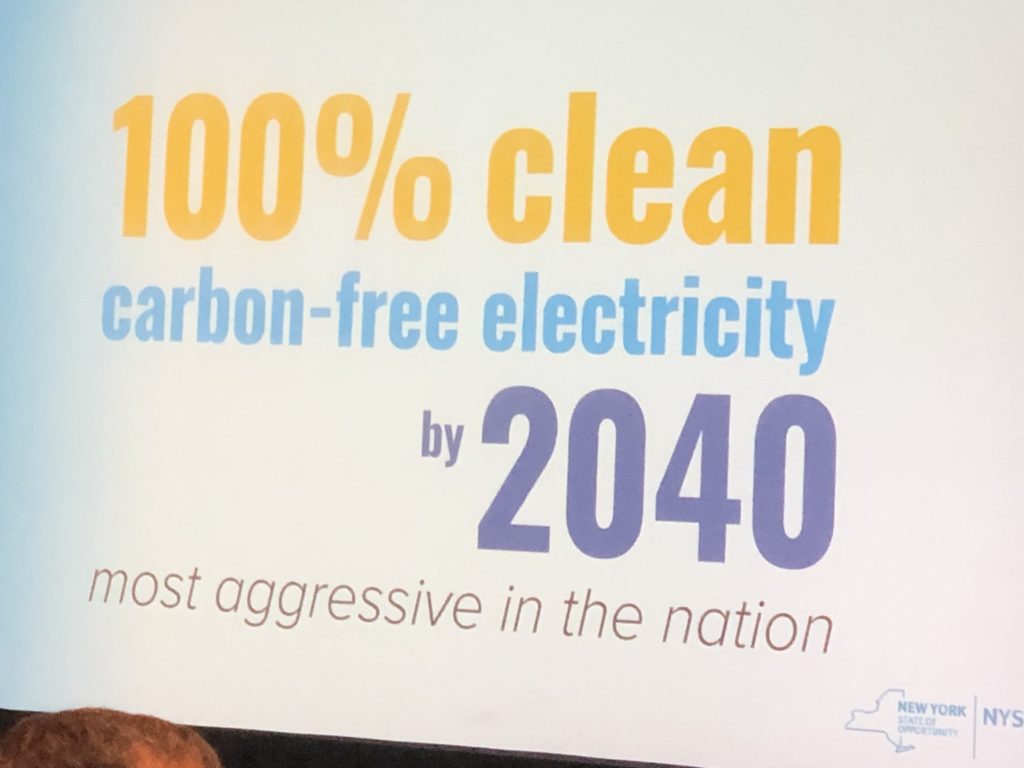
One of the things I appreciated about this year’s conference was the willingness to not merely share information out, but to engage in conversation. So many speakers kicked off with some ideas, or a short case study, then discussed the ins and outs with the attendees, even seeking and exploring new ideas with the groups. One such example was a session delivered by Rick Alfandre of Alfandre Architecture, PC and EcoBuilders, Inc and Jeffrey Domanski of Hudson Valley Energy and Erase40, called “But it costs too much”. In this session we talked about what obstacles we face in creating exceptionally well-performing buildings and how to address these challenges.
One issue is the interplay between mandates and early adopters. We need both yet often government waits for the market to change, and the market waits for the government to make it happen. There is great perceived risk in being a leader.
Another is the ever-pervasive notion that it costs more to build green and low-energy buildings. What it truly requires is thought investment, and it is absolutely do-able to ensure a project at no greater up-front cost than a conventional project, and even a project that is less expensive to build. Case in point, the Net Zero Village in Rotterdam, NY which is a market rate apartment complex built by a developer for “normal” budget. Coupled with the deep resistance and discussions of up-front cost is the actual fact from behavioral science that we do not make choices based on the logic of cost…ever. There are always other factors, including the context of the moment and the way in which the decision is presented.
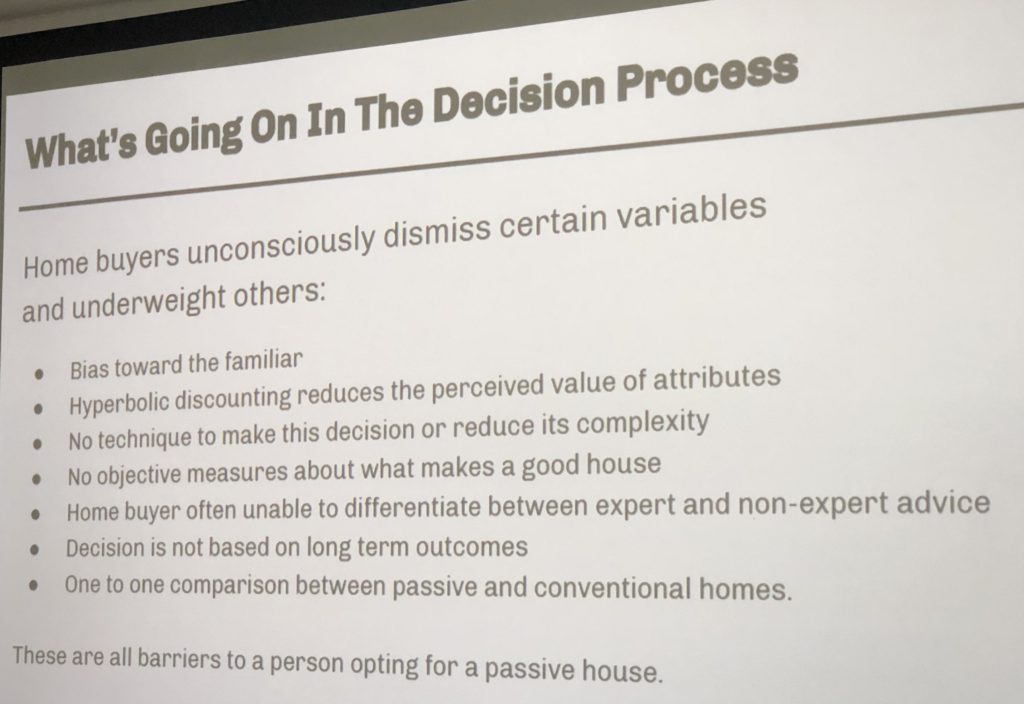
Of course, the main frustration to me any discussion such as this is that we are not yet recognizing the imperative we face. We must do exceptional work, and we currently have a little bit of time to get ourselves in gear and prepare. Time is short, the evening is encroaching on our hiking path, and we have a long way to go. How do we reactivate the innovative spirit that this nation was supposedly built upon?
Rest assured, I did see some activated innovations. Many are tied to our re-emerging understanding of natural systems and the importance of connections to nature for our physical and mental well-being. And creating these natural connections can result in more attractive buildings, wider parameters of comfort, and greater appreciation for community, all of which can help us with resilience.
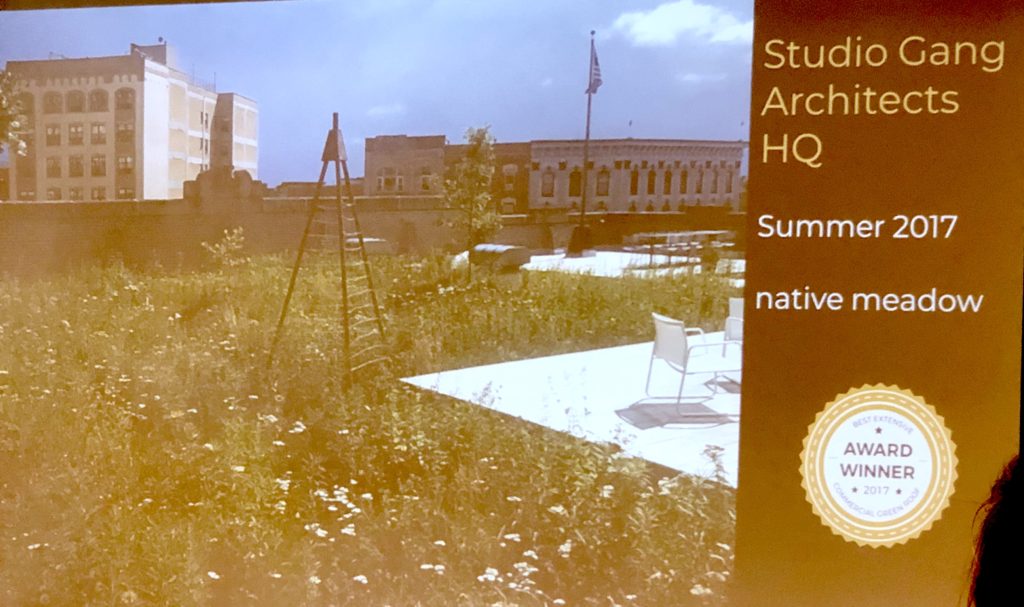
I attended a session on green roofs. Not just any green roofs, but meadow roofs that work to use a lightweight soil composite and native, drought-tolerate plantings. Fascinating. The most beautiful and inspiring story was about a roof that needed to overwinter before the final plants could be installed. The contractor recommended a cover crop of winter wheat to hold the soil medium in place on the roof. Come late spring, the designers realized they had a harvestable crop. They took this gift and created an educational platform where inner city kids came to learn about the roof and the flora, harvested the wheat, figured out how to thresh it, and had it milled by a local company (62 pounds of wheat is what I wrote down). They then baked cookies and sold them as a fundraiser. And none of that was the purpose of the project, just a side benefit of a construction strategy to retain soil medium on the roof. Think what we could do with a roof that produced such “side benefits” as wheat from a winter cover crop, tomatoes from summer plan tings, and fed bees from all the blossoms.
There were two sessions delivered by brilliant staff of COOKFOX. One was on “unpaving paradise” and the other on how nature affects and engages our minds, and how to work for that supportive and energizing outcome. The first illustrated how we can bring nature back into even very dense urban environments in a way that benefits the occupants of the building and the city as a whole so that communities are reconnected. The second spent some time showing development of such spaces, sharing the charrette processes that can inform the goals and design of those spaces, and how patterns of nature can be reflected in metal screening, lighting layouts, and controls of shading. And every space was amazing, boasting large window views to connect at lobby spaces, long views through the buildings with visual stimuli of plants and patters, and use of balconies to see nature live and to get your hands dirty and even to produce food.
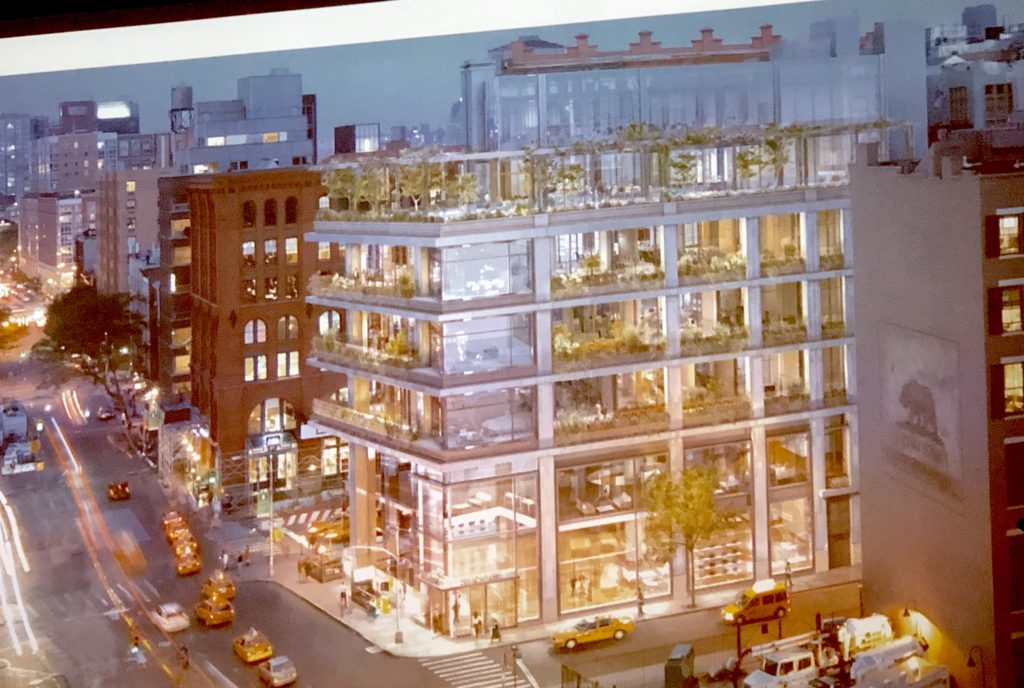
Both sessions, again, focused a lot of time on discussions with the attendees. I am so very glad this is the trend (I hope it is a trend). To be able to tap into the collective intelligence in the room is inspiring. Even more important is the fact that this engagement solidifies the information by expressly activating brains and letting them do what they do best, ponder, explore, co-create.
Another message? We build buildings for people (yeah, I know, shocker, right?). Rick Fedrizzi, who is always inspiring and immensely practical about process, kicked us off on Thursday morning by speaking not only of the WELL institute and rating system, but of the importance in the instance of interaction between people and built form. 70% of our health is tied to our physical and social environment. When we understand this concept, we will employ healthy materials, re-engage with nature in biophilic explorations, and connect us, once again, to the nature that we are a part of.
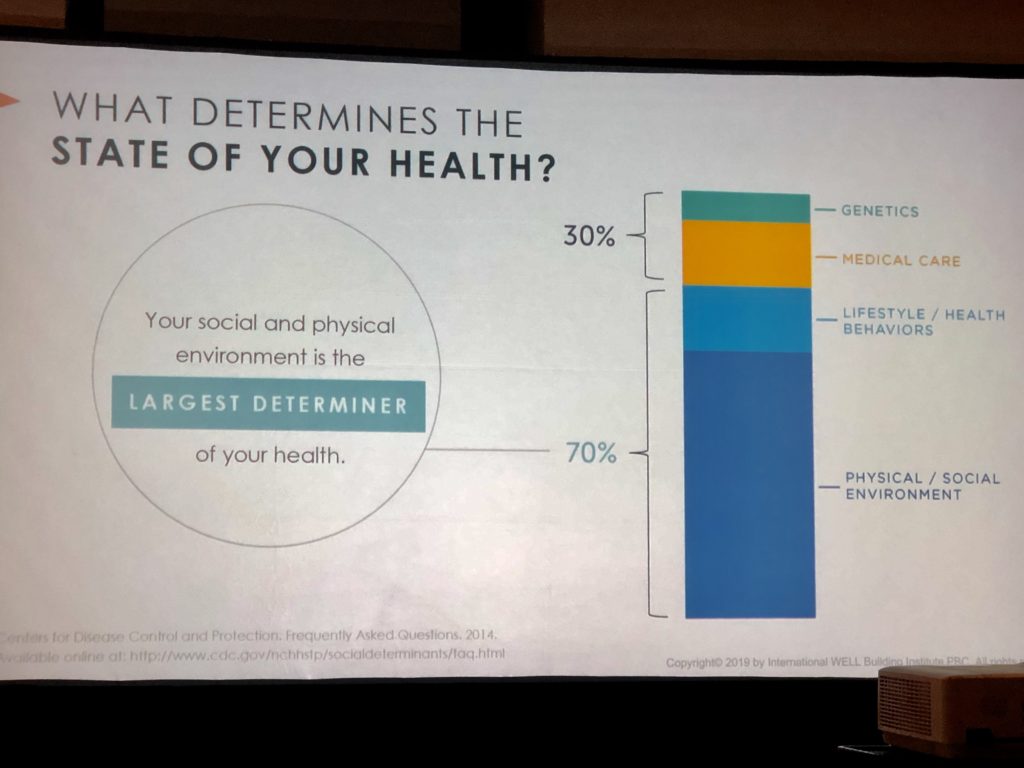
Rick was followed by a panel discussion about development projects, and the barriers to achieving ZNE. Developers are the hardest nut to crack regarding green building because of their lack of connection to the operational side and how that can mitigate any perceived or real up-front costs. Yet I was still amazed at the near fanatical commitment to the idea that this work will always cost more, even when we talked about setting a not-to-exceed (NTE) price for the project. Per successful NREL projects (National Renewable Energy Lab), and market-rate developer built apartments in Rotterdam, NY, mentioned previously, there is a real path to success:
- Set the not to exceed price
- Define the performance goals
- Prioritize the goals
- Make sure your whole team commits to those goals and the prioritization
- Select the design or design/ build team that can give you the most achievement toward those goals without exceeding the set price level
This would move the market.
I was honored to be able to present with Jim D’Aloisio of Klepper Hahn and Hyatt on Thursday afternoon. We explored in “Tales from the Trenches” the many ways we can reduce our embodied carbon in our buildings. These stories covered successes and obstacles, told about how bad things can bring unexpected good results, and how sometimes there is misinformation and misdirection out there that we need to address. The biggest messages from us? 1) Change is not easy, and it takes effort, and 2) it is always beneficial to look at the restraints you are facing, treat them as opportunities to gain information and insight, and use them to build a better outcome than you initially envisioned. Thanks to Jim for being one of the most collaborative presenters I have ever worked with.

Talk about inspiration – The final session I attended featured students from Clarkson University who have spent a semester working with LEED for Communities in the Lake Placid area. It was a revelation to them how much data is needed, how that data can be gathered in different ways by different entities causing an inability to aggregate or offer trending analysis. They also learned about communication with Mayors and Boards, not-for-profit entities, and individuals. It was a hands-on working lesson in sustainability, and the work they did will be of great use to the community to build traction and improvements going forward. We need this course every semester, in every college, for every community in the state!
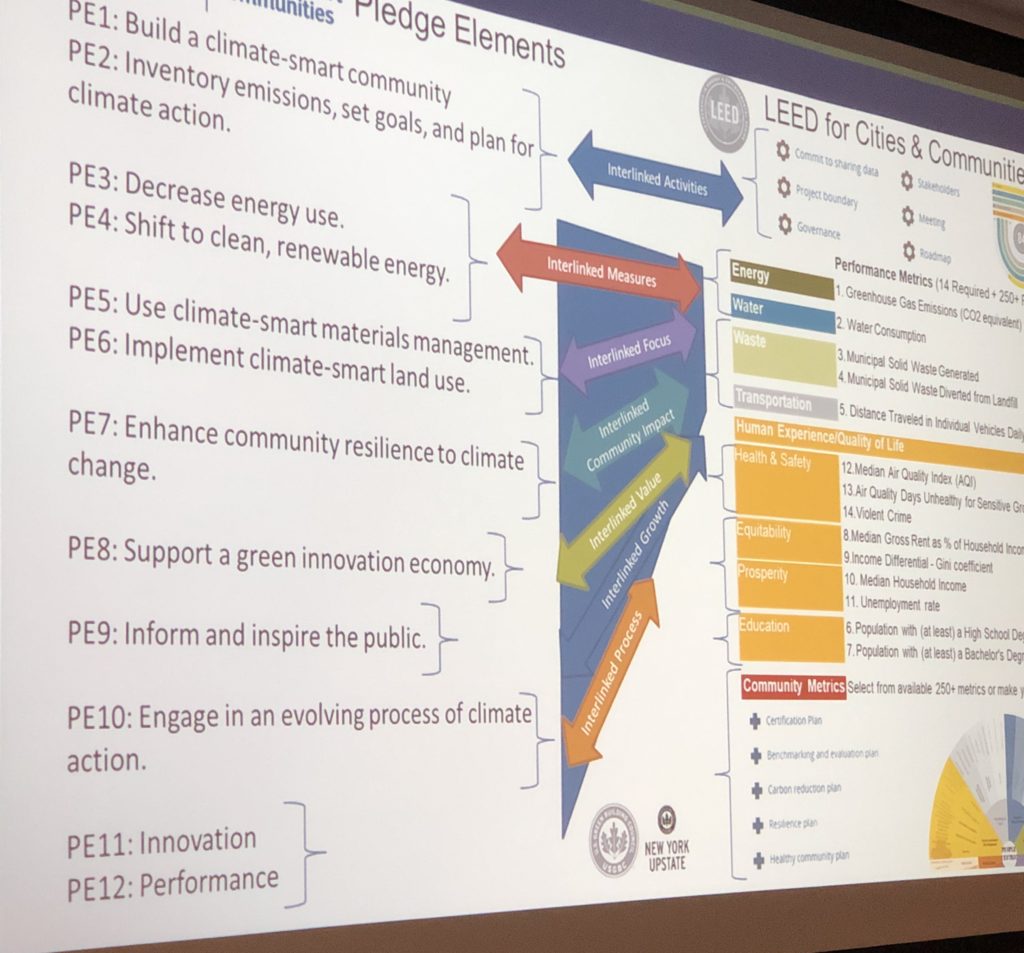
This conference has hit its stride, and can support our continued excellent work. The industry as a whole has rounded the curve and topped that peak and we now see where we have to go. It is still a long way and we have many challenges to face.
But we are poised, capable, and willing to be greener,
Jodi
2 Others like this post, how about you? (no login required)
Carbon Free Nuclear Power!!!
Thanks, Todd.
Nuclear is absolutely one possible piece of the solution. From the little I know about nuclear power plants, and the decent amount I know about the carbon intensity of concrete mixes, I suggest the nuclear solutions need to be smaller “backyard” approaches, and that we need to figure out the waste issues, pretty darn fast.